- Home
- Creepers & Climbers Flowering Plants
- Dolichandra unguis-cati - Creepers...
Dolichandra unguis-cati - Creepers & Climbers




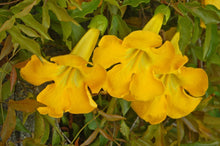
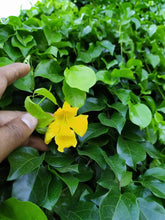
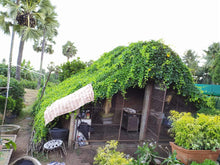
Dolichandra unguis-cati - Creepers & Climbers




Damaged or lifeless? We’ll replace it for free. Learn more
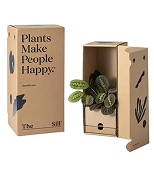
Double layered custom boxes to protect plants during shipping.
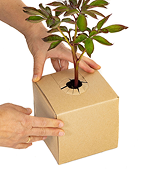
Air vents for proper air-flow
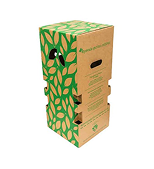
To preserve plant freshness during transit
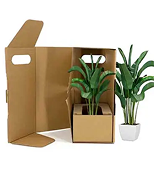
Details steps of how to grow and maintain your plant
This is a rapidly growing evergreen climbing vine belong to Bignoniaceae family. Stems are woody and can reach 20 meters, thin and small aerial roots are used for climbing. Leaves are dark green, opposite and bifoliate. Plant produce flowers in winter, spring, summer but the frequencies of blooming are more in spring and they are yellow in color it may be alone or in groups of 2 or 3.
Care Tips
- Can grow in minimum 12 inch pot & more than that will be awesome, also direct in the ground is always preferable.
- Provide pergola like structure with netting like coverage on the top, also well grow on compound wall.
- Always do regular pruning whenever needed in order to make good shape.
- Add organic fertilizer once in 2 month and also you can spray water soluble nitrogen fertilizer on the foliage once in 2 month.
- Spacing between plant to plant should be 2m*2m while planting together for more bushy form.
Sunlight - Full Sunlight (6hrs)
Water - Always Maintain the moisture in the soil. When the leaves turning dull it is indication of water requirement.
Fertilizer - Apply any organic fertilizer once in 2 month.
Pruning - Prune the extra branches if it is going away from the structure because if branches hang in the air, it will not grow.
Location - Pergola/Trellis/Between the Pillar/Sunny Open Balcony/Compound wall
INSIDE THE BOX
| S.No. | PRODUCT NAME | DIMENSION |
| 1. | Dolichandra Plant | <1 Feet Height |
| 2. | Growing Pot (Black color) | 6 Inch |
**above specifications are for indicative purpose only, actual dimensions may slightly vary.
INITIAL CARE FOR 10-15 DAYS JUST AFTER RECEIVING YOUR PLANT
- Remove the Packaging Materials carefully.
- Press the soil in the pot & add additional soil(garden mix) if necessary.
- Maintain moisture in the pot, Do not over water it may kill your plant, so make sure that the soil should be dry between watering.
- Make sure that plants get enough morning direct bright light(2-3hrs) for 10-15 days & do not go for immediate transplanting (minimum 1 month)
- After 1 month you can transplant it into slightly bigger pot than the present pot or you can remain in the same pot for 6-7 month.
- Just prune if any branch of the plant is get damaged in transits. New leaves will come definitely.
Selected plant of 8-10 inches
Planted into a 5-inch pot
With healthy, moisture-retaining soil
A care instruction sheet for maintenance guide

Get in touch for best pricing on bulk orders and landscaping projects.
 WhatsApp us
WhatsApp us

Call on 9177805454 (Mon-Sat, 9 AM-6 PM) or WhatsApp us – we’re here to help.
About Exotic Flora
At Exotic Flora, we’re passionate about bridging the gap in bringing plants to everyone. With over 500+ varieties across 7 plant categories, from exotic finds to everyday greens, we bring the entire range to you.
Our plants, sourced from all parts of India are nurtured at Kadiyam, in our 25 acres in-house nursery by a team of expert horticulturists. Once they are ready we ship all our plant varieties across India.
Our services go beyond safe delivery of plants. A dedicated support team is there to help you with any maintenance queries you may have.
At Exotic Flora we always believe in going that extra mile, because everyone should have the plants they love.
It grows horizontally. Creepers are plants with stems that grow along the ground, around another plant / on a wall by means of extending stems or branches.
It grows vertically. Climbers are plants with a tender stem that grow with the help of external support. They climb over the other by twine or hook from their leaves & stems.
It depends on the plant varieties and the available space for spreading. In General, a creeper can spread up to 15 meters.
Perennial creepers/climbers are plants that live or grow for a long time (more than a year)
List of plants that can also grow in Indirect bright light is All money plants, Pink wall creeper, All thunbergia, Ipomoea cairica & Ipomoea black, Hari Champa, Cissus nodosa, Mandevilla, and Trachelospermum jasminoides.
Minimum 3 years needed for a creeper plants to cover 5-10 meter of walls. But it also depends on the Plant care and plant variety.
It is always good to read both together, Creepers grow horizontally, it creeps on the ground whereas Climbers grow vertically by external support by their twine, tendrils, and other supportive structure.
Minimum 4-6hours of direct bright light are necessary for flower plants to produce flowers. The soil should be well-drained, fertile, and organic in nature, the sandy-loam soil is the best soil for flowering plants.
The best Fertilizers are Organic fertilizers & Organic compost, manure to apply to your flowers. Remember Phosphorus based fertilizers are best to produce more flowers. Look at the descriptions of each plant for plant care guidelines.
There are some creepers like Curtain creeper, Elephant creeper, Dolichandra unguis cati, Thunbergia, Passion flower, Wall creeper, Ipomoea etc, are very suitable for making privacy or providing like structure for shade purpose.